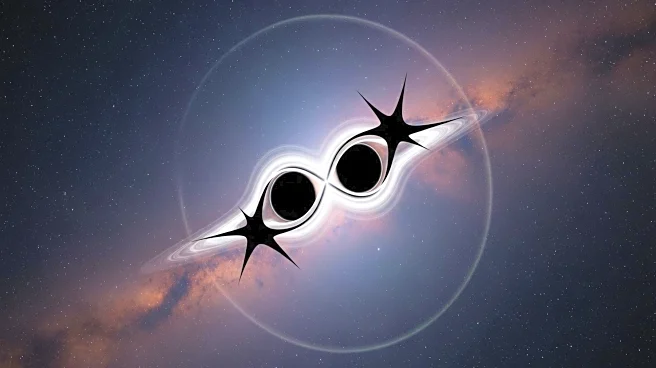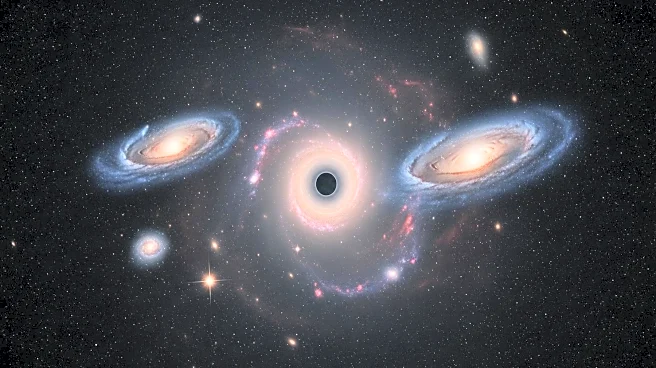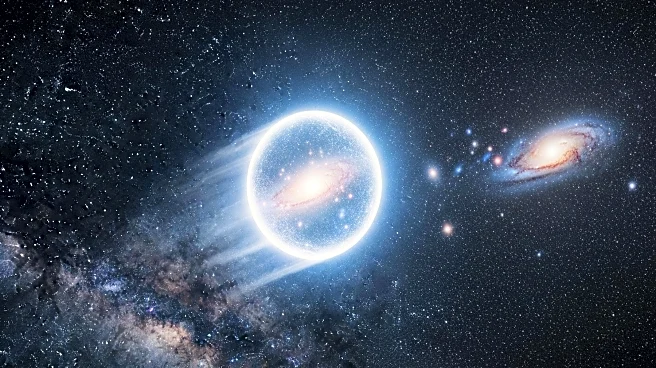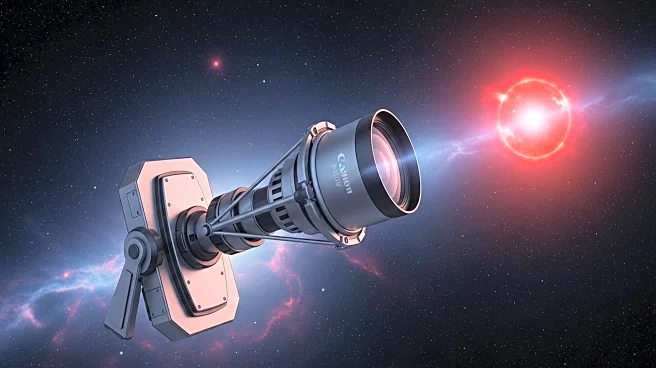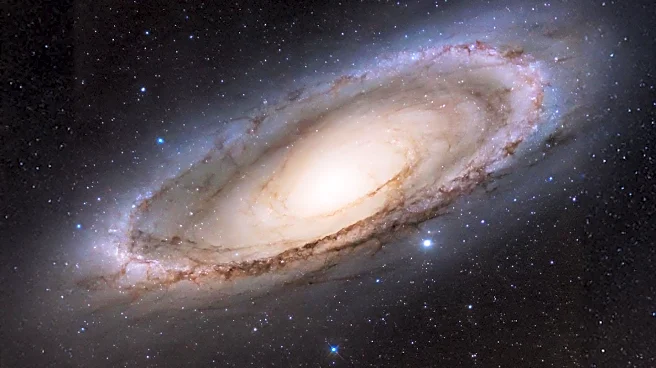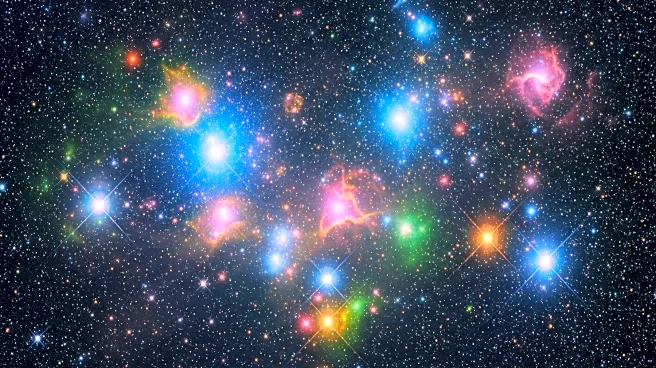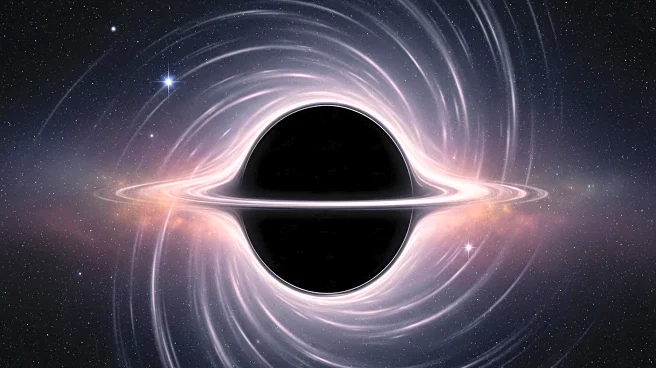What's Happening?
Astronomers have detected the lowest mass dark object ever measured using gravitational lensing techniques. The object, located approximately 10 billion light years from Earth, has a mass a million times greater than the sun. This discovery was made possible by a network of telescopes, including the Green Bank Telescope and the Very Long Baseline Array, which formed an Earth-sized super-telescope. The research, published in Nature Astronomy, highlights the challenges of observing dark matter, which does not emit light, by using distant galaxies as a backlight to detect gravitational imprints.
Why It's Important?
This discovery is significant as it provides insights into the nature of dark matter, a fundamental component of the universe that influences the formation and evolution of galaxies. Understanding whether dark matter is smooth or clumpy can reveal its composition and properties. The findings support the 'cold dark matter theory,' which is crucial for models of galaxy formation. The ability to detect such low-mass dark objects could lead to further discoveries, potentially challenging existing theories about dark matter.
What's Next?
The research team plans to analyze the data further to understand the mysterious dark object better and explore other parts of the sky for similar low-mass dark objects. If more such objects are found, it could lead to a reevaluation of dark matter theories. The team aims to refine their techniques and continue using gravitational imaging to map invisible dark matter clumps.
Beyond the Headlines
The discovery raises questions about the existence and distribution of dark matter clumps in galaxies, including the Milky Way. It also highlights the technological advancements in radio telescopes and modeling algorithms, which are crucial for detecting subtle gravitational signals.

